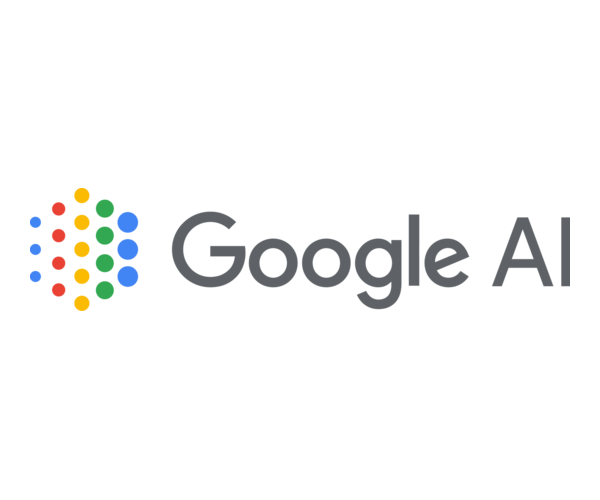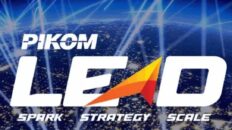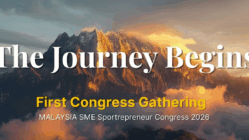At Google Marketing Live Southeast Asia (GML SEA) in Singapore, Google announced a suite of new AI-powered tools designed to transform how businesses connect with consumers across Search and YouTube. These tools are designed to simplify campaign management, improve targeting and unlock more effect brand discovery by placing advanced AI models in the hands of marketers.
With consumer journeys growing more fragmented and digital behaviours becoming increasingly multimodal, Google’s latest tools reflect its commitment to helping businesses stay ahead – using AI to drive faster creative production, sharper performance insights and broader reach.
“For years, we’ve been at the forefront of AI-driven advertising. As consumer journeys become more complex—and resources more limited—we’re equipping marketers with our most advanced models yet: more intelligent, more agentic, and more personalized. That means faster creative, wider reach, sharper insights, and better results,” said Sapna Chadha, Vice President, Google Southeast Asia and South Asia Frontier.
Southeast Asia: A Region Ready for AI-Enhanced Discovery
Southeast Asia continues to be one of the most digitally engaged regions globally, with high mobile adoption and younger consumers setting the pace for how search and video platforms are used. Visual search is on the rise, with over 100 billion Google Lens searches made globally in 2025 so far – 20% of which show commercial intent. Google’s Circle to Search, another AI-powered feature, is gaining traction among Gen Z users, who now initiate over 10 percent of their searches with it.
YouTube remains the top video platform in the region in terms of daily users, and it’s not just it’s reach that sets it apart. Research shows that users in Southeast Asian markets trust the opinions of YouTube creators more than those on other platforms. That trust translates into performance: in markets like Indonesia, Thailand and Vietnam, YouTube delivers between 2 to 4 more times the return on investment (ROI) of traditional linear television. It also consistently outperforms social media platforms such as TikTok and Meta in delivering business results.
What’s New for Marketers
At GML SEA, Google revealed several new tools aimed at helping marketers tap into this highly engaged, mobile-first audience with more intelligence and less guesswork.
1. Ads in AI Overviews
One of the standout announcements was the upcoming rollout of Ads in AI Overviews. This feature will be made available in English in Malaysia, Singapore, Indonesia and the Philippines later this year. Ads in AI Overviews allow businesses to appear within the AI-generated summaries on Google Search – placing them at the very start of the customer journey, when user curiosity is high consideration begins. As AI Overviews becomes more widely used, this format is expected to deliver highly contextual ad placements that match user intent with commercial relevance.
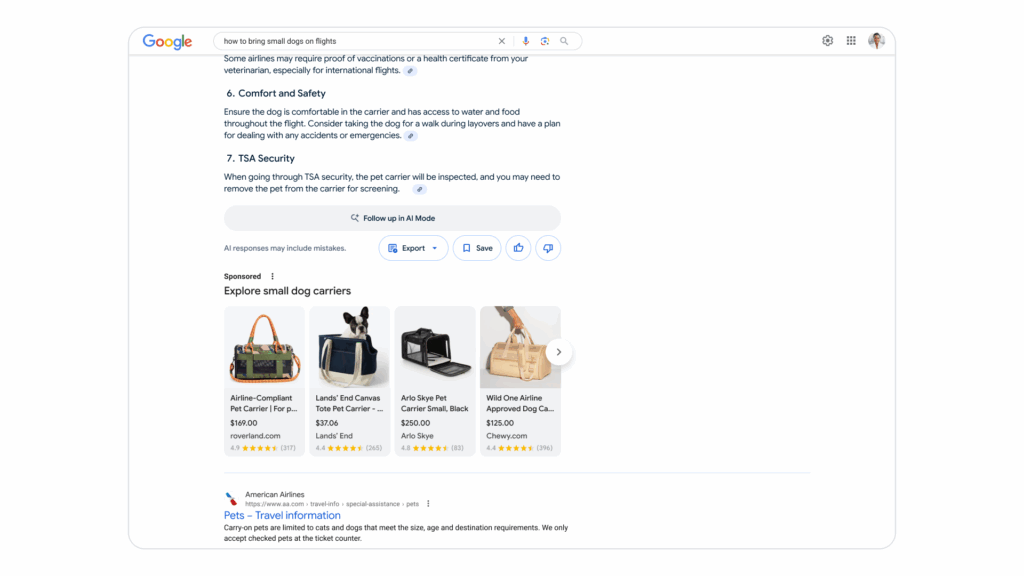
2. AI Max for Search
Another major launch was AI Max for Search, a next-generation ad product powered by Google’s Gemini model. Unlike traditional keyword-based targeting, AI Max helps businesses appear in more relevant search moments by automatically understanding their website, ad content and customer intent. It generates headlines based on what users are actually looking for – whether they’re typing, speaking or using visual search tools. This approach eliminates the need for extensive keyword lists and allows for broader, more accurate reach.
Brands that have tested AI Max are already seeing impressive results. Shopee, for example, ran a five-week experiment in Southeast Asia and saw conversions double and ROI improve by 49 percent. In Malaysia, Maxis used the tool to reach new postpaid customers through long-tail and multilingual search queries, including searches in Chinese. The system automatically matched ad copy to user intent and directed traffic to relevant landing pages. Aileen Soo, Head of Discovery at Maxis, said that AI Max not only matched their manual click-through rates but did so with significantly less effort – describing it as “all with just a checkbox”.
3. Asset Studio
Google also introduced Asset Studio, a creative workspace within Google Ads that uses generative AI to help marketers produce image and video assets at scale. By leveraging Google’s Imagen and Veo models, Asset Studio can generate a wide variety of creative variations tailored to performance goals, removing production bottlenecks and helping teams launch campaigns faster.
4. AI Mode
AI Mode, Google’s most advanced AI search experience to date, was also highlighted during the event. Designed to handle deeper reasoning and multimodal queries, AI Mode allows users to ask longer, more complex questions and receive answers with helpful links to web content. Google shared that early testers are asking questions two to three times longer than traditional searches. While testing of relevant ads in AI Mode is currently limited to the United States, the potential for integrated brand visibility in richer, AI-generated responses signals a future of more intelligent ad placement.
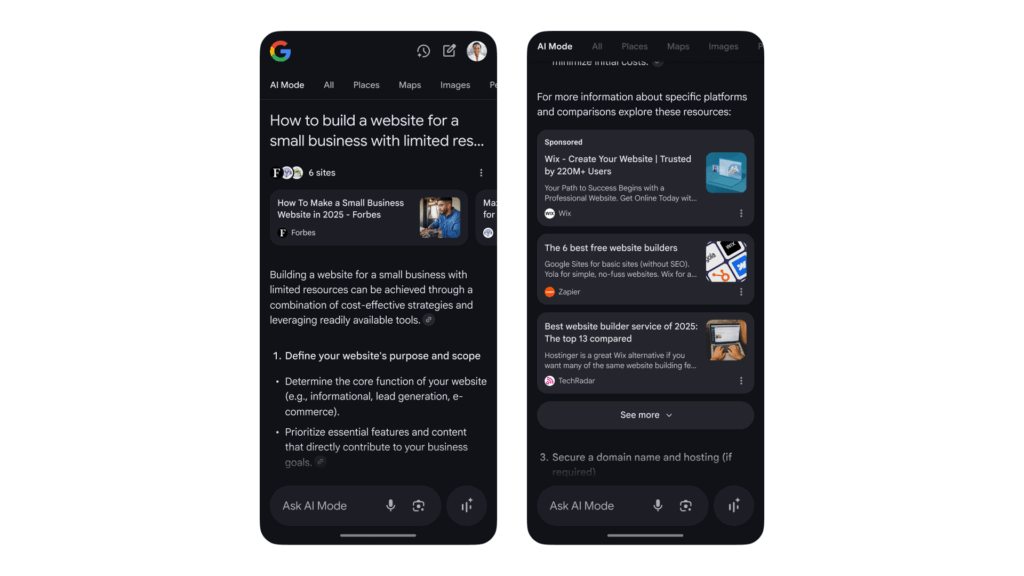
5. YouTube Creator Partnerships Hub
Another notable announcement was the YouTube Creator Partnerships Hub. This new feature within Google Ads makes it easier for brands to identify, connect with, and collaborate with YouTube creators. Using AI-driven search, marketers can browse creators by keyword, category, or trending topics, and view valuable data such as audience demographics and engagement metrics. Once a brand initiates a partnership, they can promote creator content as ads and measure performance—all within a single, unified platform. This tool is currently available in Singapore and Indonesia, with plans to expand to more Southeast Asian markets soon.
6. Agentic AI in Ads and Analytics
Finally, Google introduced Agentic AI capabilities into both Google Ads and Google Analytics. Unlike traditional automation tools, Agentic AI acts as an intelligent assistant that not only supports but actively works alongside marketers. In Google Ads, it can automatically generate campaigns, suggest real-time keyword optimisations, and fine-tune creative based on campaign performance. In Google Analytics, it provides instant, actionable insights drawn from performance data—freeing up marketers to focus on strategy and high-impact decision-making.
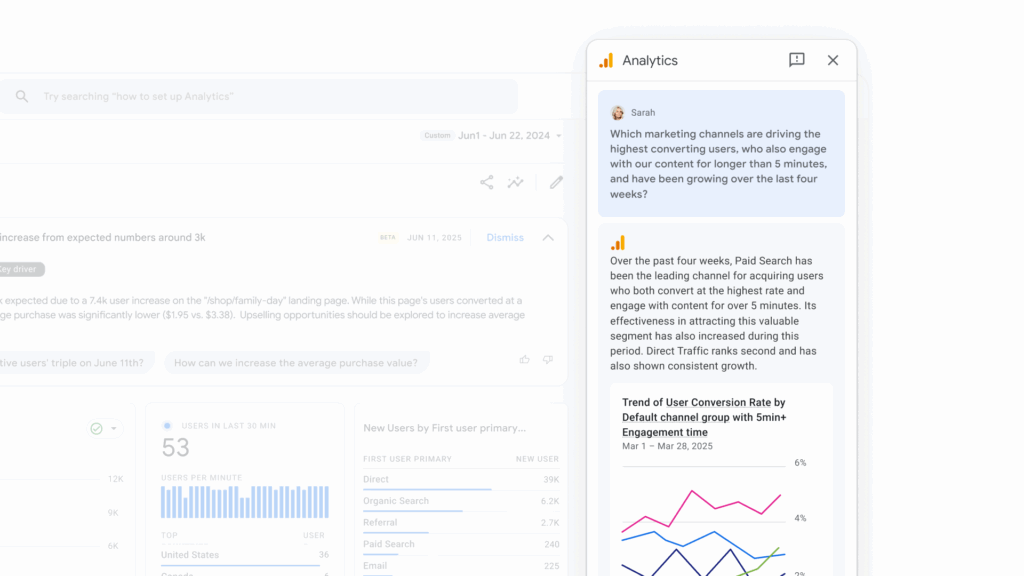
A New Era of Smarter Marketing
With this new generation of tools, Google is positioning itself as more than a platform – it’s becoming a marketing partner. By embedding AI directly into core advertising workflows, it’s helping businesses anticipate consumer needs, create at speed and measure what matters in real time.
Brands in Southeast Asia are already unlocking real value with AI.
These announcements signal a shift toward smarter, more predictive marketing in Southeast Asia – driven by automation, powered by relevance and built for growth.



